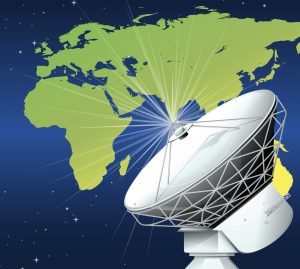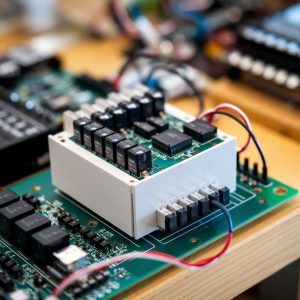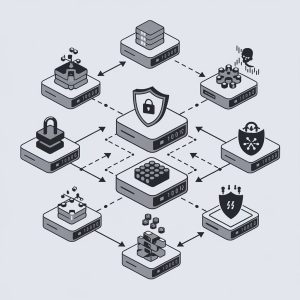Items of № 10, 2024
Problematic issues of development and implementation of the Digital code of the Russian Federation
V.K. Saryan, The M.I. Krivosheev Radio Research & Development Institute (NIIR), scientific consultant of SRC of complex radio systems, professor, Dr.Sci.(Tech.); saryanvk@niir.ru
P.I. Antonovich, NIIR, director of STC of EMC analysis, associate professor, Dr.Sci.(Mil.); antonovichpi@niir.ru
Abstract. The review and analysis of the reasons for the development of the Digital code of the Russian Federation is carried out, one of the mechanisms for the formation of a regulatory legal and technical framework for streamlining relations between participants in the processes of information digital interaction is proposed.
Keywords: digital society, information digital technologies, digital code, information interaction.
Nonlinear recurrent filtering in the problem of estimating parameters M-QAM signal with lognormal noise
N.E. Poborchaya, Moscow Technical University of Communications and Informatics (MTUCI), professor, Dr.Sci.(Tech.); n.poborchaya@mail.ru
S.A. Zharkikh, MTUCI, postgraduate; zharkih-sergey@mail.ru
Abstract. This paper introduces the nonlinear filtering algorithm with the first Taylor’s approximation for estimating the amplitude, frequency shift, and phase of the M-QAM signal with known information symbols observed against the background of the mixture of white Gaussian noise and lognormal interfering signal. There is also phase noise present in the signal model, which contributes to the non-Gaussian interfering signal. The algorithm is obtained using the modified mean square method in the form of Tikhonov’s functional and does not use any information about the distribution law of random processes included in the watch equation. The computational experiment was conducted that demonstrated the efficiency of this approach in the presence of a non-Gaussian interference effect and the ability to achieve a satisfactory level of estimation accuracy for the 64-QAM signal with the correct selection of the algorithm’s parameters and the sample size of the signal. The accuracy of signal parameters’ estimation by a nonlinear filtering algorithm has been investigated with lognormal interference and without it.
Keywords: nonlinear filtration, modified least squares method, Taylor series approximation, lognormal noise, M-QAM signal, signal parameters estimation.
DL precoding and user grouping in PD-NOMA systems
V.B. Kreyndelin, Moscow Technical University of Communications and Informatics (MTUCI), head of department, professor, Dr.Sci.(Tech.); vitkrend@gmail.com
L.A. Varukina, MTUCI, applicant, Ph.D.; varukina@rambler.ru
Abstract. This article describes a method for increasing the number of simultaneously served users on the downlink of a PD-NOMA system using MIMO technology by grouping users and precoding the signals of users within each group. Thanks to precoding, the correlation of signals from users in different groups can be reduced. A novel precoding algorithm is proposed for minimization of demodulation error rate error rate averaged over all users. It results in improving receiver processing performance and boosting a number of served users compared to the number of users in classical MIMO systems with orthogonal access.
Keywords: MIMO, MU-MIMO, NOMA, PD-NOMA, ML, precoding, grouping, mobile communications.
Throughput analysis of MIMO-NOMA systems
A.M. Sinilnikov, Saint Petersburg branch of the M.I. Krivosheev Radio Research & Development Institute (NIIR) – LONIIR, chief engineer of the scientific and technical center for satellite communication systems, radio monitoring and broadcasting, Ph.D.; sinilam01@gmail.com
G.A. Fokin, The Bonch-Bruevich Saint Petersburg State University of Telecommunications (SPbSUT), professor, Dr.Sci.(Tech.); fokin.ga@sut.ru
I.V. Grishin, SPbSUT, department of communication networks and data transmission, associate professor, Ph.D.; grishin.iv@sut.ru
A.A. Kalinkina, OOO «Gazprom transgaz Ukhta», communications department, communications electromechanician, SPbSUT, postgraduate; kalina110694@gmail.com
Abstract. The work analyzes the throughput of mobile communication systems using non-orthogonal multiple access technology NOMA together with MIMO technology. Issues of precoding and clustering of user equipment are explored. The theoretical calculations obtained are supported by the results of modeling the operation of the MIMO-NOMA system in the millimeter wavelength range.
Keywords: non-orthogonal multiple access, NOMA, MIMO, clustering, spectral efficiency, radiation pattern, hybrid precoding.
Methods to avoid early “error floor” in LDPC decoding
I.N. Molchanov, SPC Electronic computing information systems, research officer, Ph.D.; imolchanov@elvees.com
D.Yu. Bukhan, SPC Electronic computing information systems, head of laboratory, Ph.D.; dbukhan@elvees.com
A.I. Vasbikaramov, SPC Electronic computing information systems, software engineer; avasbikaramov@elvees.com
G.B. Sidelnikov, SPC Electronic computing information systems, head of department, Ph.D.; glebios@mail.ru
A.A. Iureva, SPC Electronic computing information systems, leading engineer; aharitonova@elvees.com
Abstract. The article discusses features of decoding a low-density parity-check (LDPC) code. The main factors that reduce the efficiency of the codec are given. Examples of “stopping sets” are considered, and methods for mitigating the early appearance of “error floor” are suggested.
Keywords: LDPC, stopping sets, trapping sets, error floor, iterative belief propagation.
A system for detecting and suppressing UAVs using the infrastructure of cellular operators for communication and control
I.M. Kudrin, bachelor; i.kudrin@ntc-rassvet.ru
I.G. Afonin, NTC RASSVET LLC, technical director; afonin_ig@ntc-rassvet.ru
Interference detection for GNSS recievers. Part I
K.Yu. Kolomensky, branch FSBI NIIR–LONIIR, deputy director for science, Ph.D.; kkolomensky@loniir.ru
Abstract. Methods for detecting unintended and intentional interference to global navigation satellite systems (GNSS) are considered. The first part of the article provides a classification of interference that can affect GNSS receivers and methods of their detection. A brief analytical review of general methods for detecting unintended and intentional interference in terms of blocking interference (jamming) is presented based on their energy impact on the GNSS receiver, as well as on the distortion of the spectral and statistical characteristics of the received signals. The advantages and disadvantages of the described methods are analyzed.
Keywords: global navigation satellite systems (GNSS), GPS, GLONASS, interference detection methods, unintended and intentional interference, jamming, spoofing.
Comprehensive planning of communication development in areas with low availability of basic network infrastructure
A.A. Zaharov, The M.I. Krivosheev Radio Research & Development Institute (NIIR), deputy director general, associate professor, Ph.D.; zaharovaa@niir.ru
S.V. Kizima, NIIR, Research center of big data processing systems, director, ITU expert, associate professor, Dr.Sci.(Tech.); kizimasv@niir.ru
V.A. Sklyarov, NIIR, leading specialist, associate professor, Ph.D.; sklarovva@niir.ru
R.N. Tselms, Saint-Petersburg State University of Aerospace Instrumentation, associate professor, Ph.D.; tselms_rn@pochta.tvoe.tv
Abstract. The article examines the issues of integrated planning of communications development in areas with low availability of backbone network infrastructure and existing technological solutions in the field of planning, creation, and operation of communications and data transmission equipment together with their autonomous power supply systems.
Keywords: telecommunications infrastructure, digital divide, development planning, communications equipment autonomous power supply.
Research of neural network codec configurations for adaptive FPV video stream frame compression system when controlling unmanned systems. Part II. Experiment
А.A. Berezkin, Bonch-Bruevich State university of telecommunications (SPbSUT), associate professor, Ph.D.; berezkin.aa@sut.ru
A.A. Chenskiy, SPbSUT, masters student; chenskii.aa@sut.ru
R.V. Kirichek, SPbSUT, rector, professor, Dr.Sci.(Tech.); kirichek@sut.ru
A.A. Zaharov, The M.I. Krivosheev Radio Research & Development Institute (NIIR), deputy director general, associate professor, Ph.D.; a.zaharov@niir.ru
Abstract. In this work, we investigate various configurations of neural network codecs developed on the basis of variational autoencoders of the VQ and KL types (VQ-f4, VQ-f8, VQ-f16, KL-f4, KL-f8, KL-f16, KL-f32) from the Stable Diffusion models for the possibility of their use for video stream frame compression in FPV control of unmanned systems. We summarize the studies conducted for the VQ-f16 autoencoder. The second part of the article considers the adaptation of quantization and compression algorithms for the latent feature space of variational autoencoders of the VQ and KL types, evaluates the ratios of compression rates and quality metrics of the reconstructed image for variational autoencoders with various configurations of the neural network codec, determines the best methods for processing the latent space for each variational autoencoder, and evaluates the feasibility of using each of the variational autoencoders. Preliminary configurations of the neural network codec for use in various conditions have been developed. The results obtained demonstrate the possibility of using variational autoencoders in neural network codecs used in video stream transmission channels between an external pilot and an unmanned system.
Keywords: variational autoencoder, quantization, data compression, neural networks, latent space, FPV control, unmanned aerial vehicles.
Security threats of time protocols in packet switched networks
D.K. Mazurenko, The M.I. Krivosheev Radio Research & Development Institute (NIIR), leading researcher, Ph.D.; dm.ma2010@yandex.ru
D.A. Palcin, NIIR, head of research center; palcin@niir.ru
A.S. Fen, NIIR, head of department; fen@niir.ru
A.V. Fedorov, Saint Petersburg branch of NIIR – LONIIR, head of department; fav2k@yandex.ru
M.L. Schwartz, MTUCI, head of department, Ph.D.; mschwartz@smsync.ru
Abstract. The article discusses possible security threats to time and frequency allocation protocols, including the Precision Time Protocol (PTP) and Network Time Protocol (NTP). Special attention is paid to the PTP, which is used in signal synchronization systems. Possible options for protection against external threats, such as threats related to data spoofing, are also considered. The article presents a classification of security threats, types, and analysis of security threats.
Keywords: packet manipulation, spoofing, DoS-attacks, cryptographic performance, grandmaster time source attack.
Influence of the earth surface on the efficiency of medium-wave ionospheric radio lines
A.U. Zhiltsov, independent researcher, Ph.D.; zhilcova.galina@mail.ru
Abstract. The article contains the results of investigations of ionospheric MF signals at radio lines with various specific earth conductivity. There are recommendations to the specialists of MF services for taking into account the properties of underlying surfaces.
Keywords: mean waves, ionosphere, radio communication, broadcast.
Measuring the quality of telecommunication services of satellite communication systems
E.A. Nesterov, JSC RESHETNEV, general director, Ph.D.; office@iss-reshetnev.ru
Abstract. The tactical and technical features of modern satellite communication systems in low orbits are considered. The structure and normative values of key performance indicators of satellite communication systems are proposed: broadband access speed, availability, recovery time, and information security (cryptographic security). The advantages and disadvantages of space and ground-based ways of developing the Russian network information infrastructure in modern geopolitical conditions are compared.
Keywords: satellite communication systems, telecommunication services, broadband access, availability, quality, key performance indicators.









